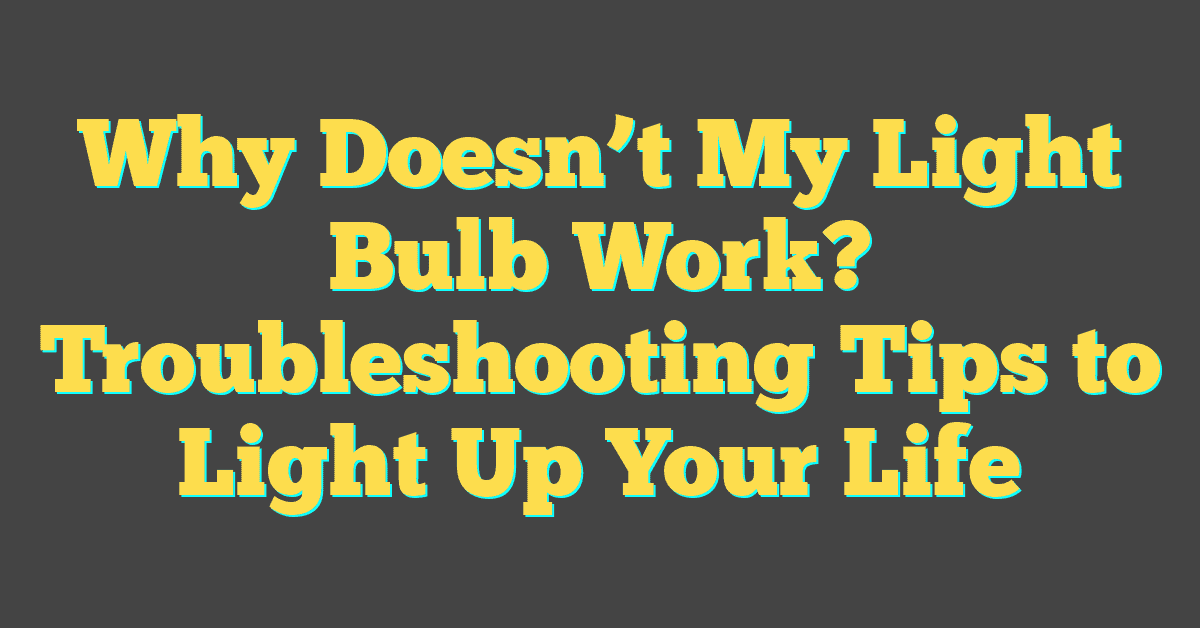Ever wondered if dimming your lights actually saves energy, or is it just a mood setter? Well, you’re about to find out. It’s a common belief that a dimmer light means less power consumption, but is there truth to it?
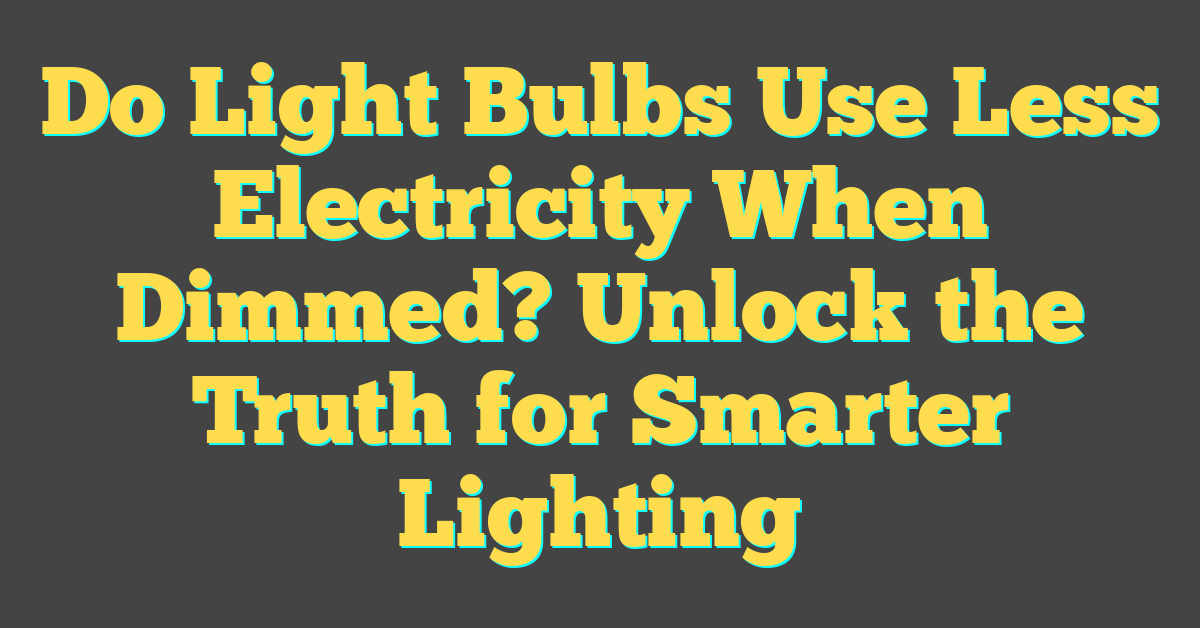
Dimming lights has always been associated with creating ambiance, but it might also be a secret weapon in reducing your energy bill. Let’s dive into the mechanics behind dimming and how it impacts your electricity usage.
You might be surprised to learn that the answer isn’t as straightforward as you’d think. So grab your detective hat, because we’re about to investigate the curious case of the dimming light bulb and its thirst for electricity.
How Does Dimming Work?
Picture this: you’re setting the mood for a cozy evening in, or you need just the right amount of light to focus on your latest DIY project. You reach for the dimmer switch, but have you ever wondered what happens when you dial down the glow?
Dimming a light bulb, whether it’s the old-school incandescent or the newer LEDs, essentially reduces the power sent to the lamp. But the technology behind it is more intriguing than you might think.
In the case of incandescent bulbs, dimming is pretty straightforward. These bulbs work by passing electricity through a filament, which then heats up and emits light. A dimmer cuts down the flow of electricity, the filament doesn’t get as hot, and voila, your light is not as bright.
For LEDs, it’s a bit trickier. LEDs need a constant current, so dimmers for these are designed to switch the power on and off at rapid rates, a method known as pulse-width modulation (PWM). Your eye doesn’t notice the flickering because it happens so quickly, but this cycling reduces the average amount of light given off without changing the LED’s brightness when it is on.
This brings us to the efficiency question. Sure, dimmed lights create an ambiance and can even reduce eyestrain, but what draws you in is the promise of energy savings. When lights are dimmed, they do use less electricity. Here’s why:
- Reduced Power: Since dimming lowers the power sent to the light bulb, the bulb uses less electricity.
- Longer Bulb Life: Dimming can extend the life of your bulbs, meaning you’re not only saving energy on daily use but also by buying fewer bulbs over time.
While savings are real, they’re not always proportionate. Halving the brightness doesn’t necessarily mean you’re cutting your energy use in half. In fact, with some bulbs, like certain LEDs, the energy used at lower light levels could be more than you’d expect. That’s because the electronics inside these bulbs still consume power, even when the light output decreases.
Understanding the types of bulbs you have and how dimming affects them is crucial. So, before you invest in dimmers all around your home, make sure you’re choosing the right kind for your specific lighting setup.
The Mechanics of Electricity Usage
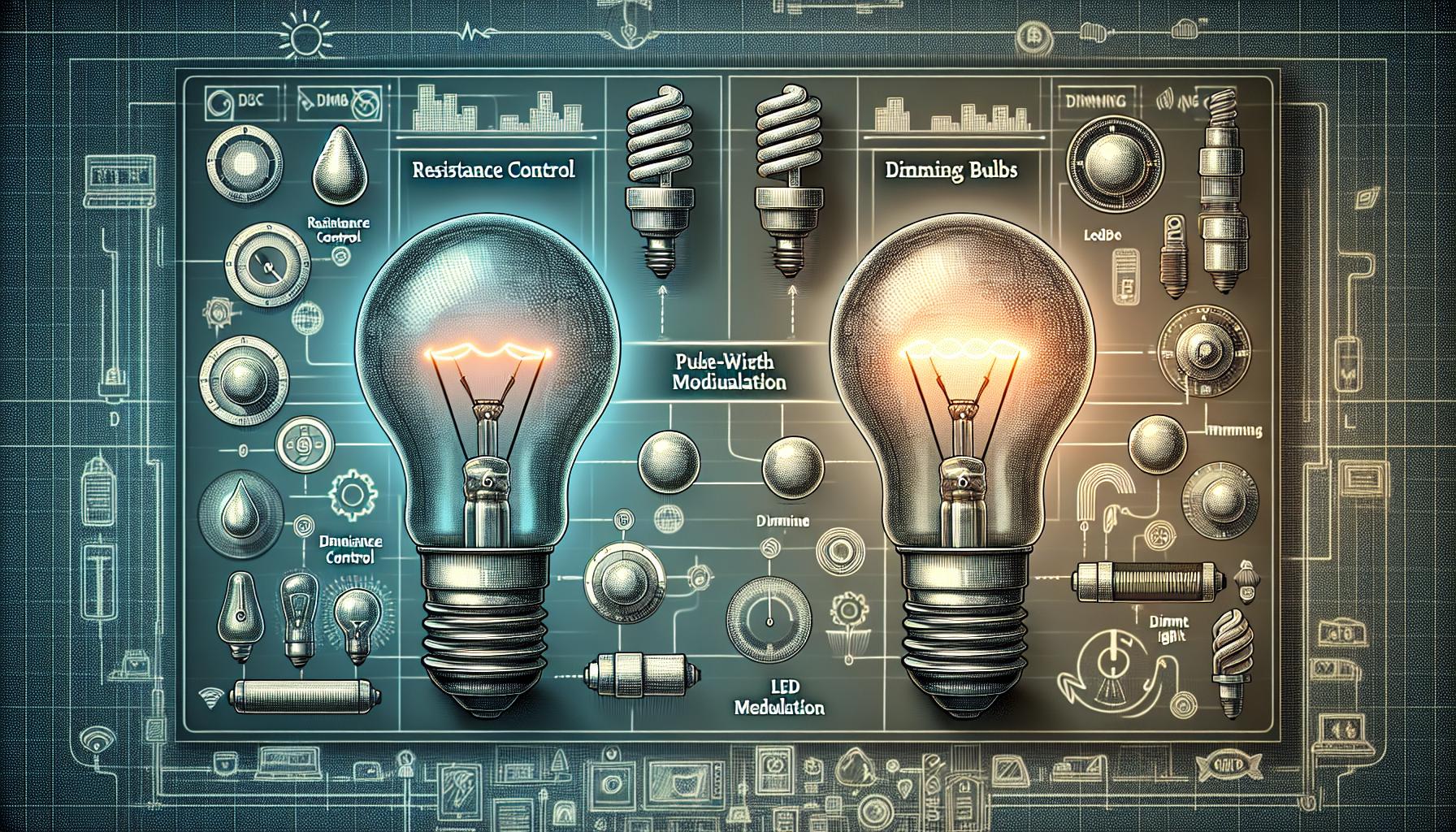
You’re on a mission to slash your energy bills and doing so starts with understanding the mechanics of how light bulbs use electricity when dimmed. Remember, not all light bulbs are created equal when it comes to energy efficiency.
Incandescent bulbs are the old school champs of dimmability. When you dial down the dimmer switch, you’re literally throttling the electrical current flowing to the bulb’s filament. This lower energy transmission equals a cooler filament and a less intense glow—which, yes, does use less electricity. It’s like easing off the gas pedal on your car; less fuel, slower speed.
In the realm of LEDs, the plot thickens. These high-tech contenders use something called pulse-width modulation (PWM). It’s like a strobe light at a dance club—the power switches on and off so quickly, your eyes are tricked into seeing a constant, dimmer light. In theory, this flickering reduces energy consumption when the lights are “off” more than “on.” But here’s the kicker: some LED drivers, the brains behind the bulb, sip on standby power even at low settings. So while you’re saving juice, it’s not always the 1:1 ratio you’d expect from dimming an incandescent.
| Bulb Type | Dimming Technology | Energy Usage at Low Brightness |
|---|---|---|
| Incandescent | Resistance Control | Significantly Reduced |
| LED | Pulse-Width Modulation (PWM) | Reduced, but Varies |
Smart DIYers like you know that dipping your toe into the dimming waters means checking your bulbs’ specs and investing in compatible dimmers. After all, a mismatch would be like expecting a car to run smoothly on the wrong type of fuel—it just doesn’t make sense. Plus, there’s the added bonus of extending your bulb’s life when dimming, which is like getting extra miles out of your car before its next tune-up.
« What Light Bulbs Contain Mercury: Safely Handle and Dispose Hazardous Bulbs
What Causes Light Bulbs to Keep Blowing? Uncover the Shocking Reasons »
When it comes to compact fluorescent lamps (CFLs), the waters become murky. Many aren’t even dimmable, and for those that are, the savings might not be as pronounced as with incandescent. They use a different method to control light output which doesn’t scale linearly with energy savings.
Exploring the Relationship Between Dimming and Energy Consumption

When you’re fine-tuning the ambiance in your home with different lighting levels, it’s good to know how it impacts your energy bill. You’ve seen that different bulbs respond distinctly to dimming, but here’s the deeper dive.
Incandescent Bulbs: Dimmer Equals Diminished Power
The old-school charm of incandescent bulbs is hard to resist. Built simply, their brightness correlates directly with the energy they’re given. As you dial down the light, you’re actually reducing the current flowing through the bulb’s filament.
Here’s what happens:
- The filament heats up less
- It glows less brightly
- Energy consumption steps down
This is known as resistive dimming, which literally resists the flow of electricity. You save energy because the bulb uses less power in a dimmer state. Now, that’s a bright idea for saving some watts and pennies.
LEDs: It’s All in the Pulse
LED lighting is the new kid on the block, bringing efficiency to the table. Your LEDs aren’t just dimming; they’re employing a technique called Pulse-Width Modulation (PWM). In this high-tech dance, the bulb flickers faster than your eye can detect, simulating lower light levels while the energy usage drops accordingly.
Remember the catch? Some LED drivers still draw power even when dimmed. That’s the standby power we talked about. But when compared to the standby consumption of other electronic devices, it’s often a negligible amount.
CFLs: A Trickier Beast
Compact fluorescent lamps, those swirly bulbs you’ve seen, can dim too, but not all are built for it. Their energy efficiency may vary when dimmed. Here’s what’s essential:
- Check if your CFL is labeled “dimmable”
- Non-dimmable models might not save as much energy
- Compatible dimmers are crucial to avoid flickering and ensure savings
By choosing the right bulb and dimmer combo, you make a move towards efficient energy use without sacrificing the cozy glow you love for your DIY lighting projects. With every twist of the dimmer, you’re not just setting the mood; you’re also regulating energy flow.
The Truth about Dimmed Light Bulbs and Energy Efficiency
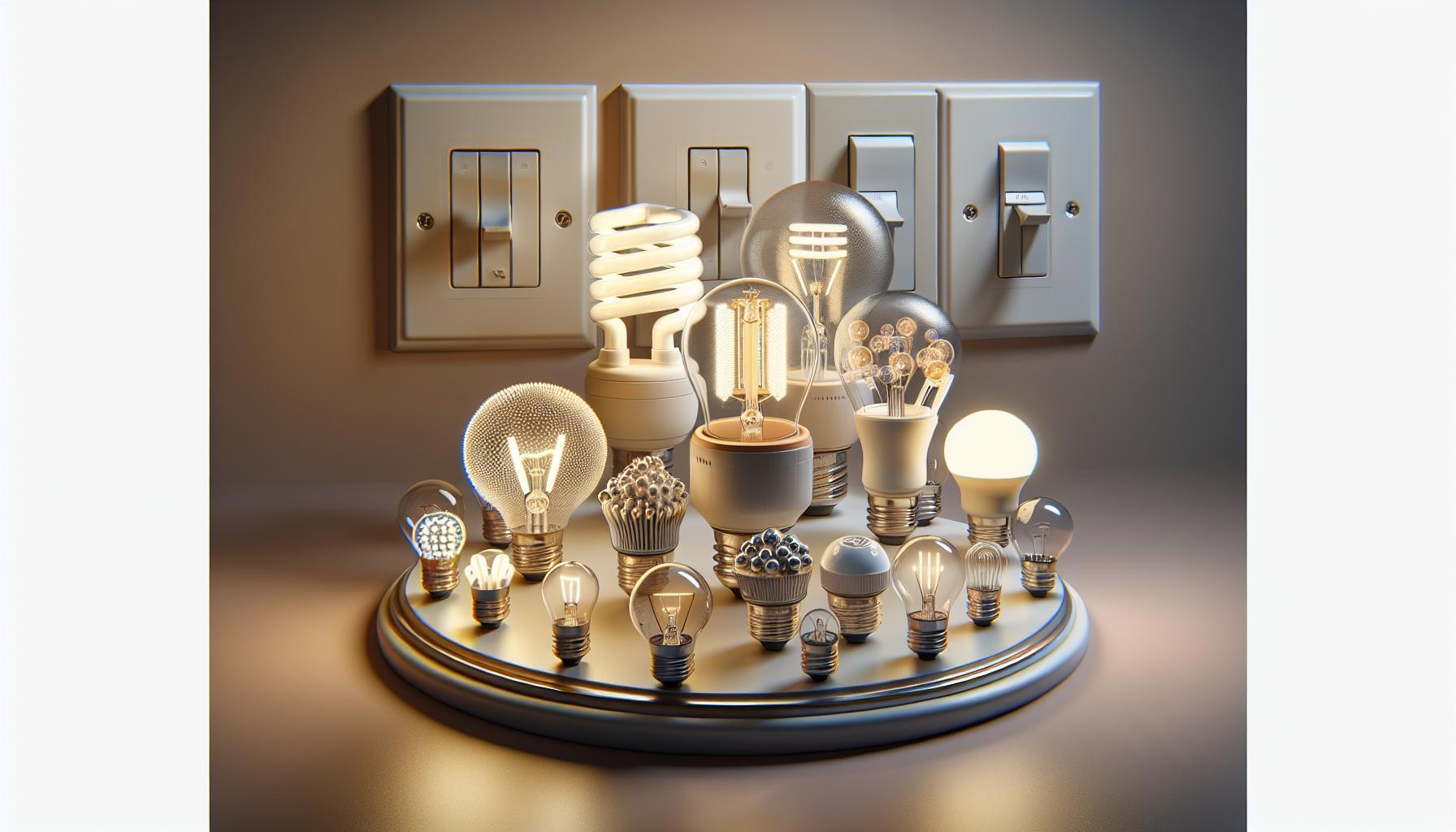
When you’re tackling your next home DIY project, understanding how dimming affects energy usage is key to both the ambiance of your space and your monthly power bill. Dimmed lights can indeed result in lower energy consumption, but the amount saved isn’t uniform across all bulb types.
Incandescent bulbs are the traditionalists of the lighting world. They’re simple: when you lower their brightness, you’re effectively decreasing the power they consume. This straightforward reaction happens because dimming reduces the electricity flowing to the bulb’s filament. It’s akin to taking a leisurely stroll instead of sprinting—less energy expended, more energy saved.
LEDs (Light Emitting Diodes), however, are the high-tech cousins in the light bulb family. They give the illusion of dimness by flickering on and off at a rate imperceptible to the human eye—think of it as a strobe light in slow motion. This doesn’t always mean less power is used. Some LED driver circuits draw a small, constant amount of power. Nonetheless, when dimmed, LEDs still tend to use less electricity compared to when they’re at full blast.
Compact Fluorescent Lamps (CFLs) are the tricky ones. Not all CFLs are designed to dim, and those that do might not boast the energy efficiency you’d hope for. It’s like running an appliance at a setting it wasn’t designed for—a hit-or-miss when it comes to saving on your electricity usage.
Here’s a quick look at how dimming can affect energy savings:
| Bulb Type | Dimmable? | Energy Savings Potential |
|---|---|---|
| Incandescent | Yes | High |
| LED | Yes (with compatible dimmer) | Moderate to High |
| CFL | Yes (with compatible dimmer) | Varies |
Before you grab that dimmer switch for your lighting project, make sure to check your bulbs’ specifications. Besides impacting your energy savings, the right dimmer and bulb match-up ensures a flicker-free experience and extends the life of your bulbs. Remember, not all dimmers are created equal—some are specifically engineered for LEDs or CFLs. By investing in the right hardware, you’re not just setting the mood; you’re optimizing your home for energy efficiency and longevity.
Other Factors to Consider
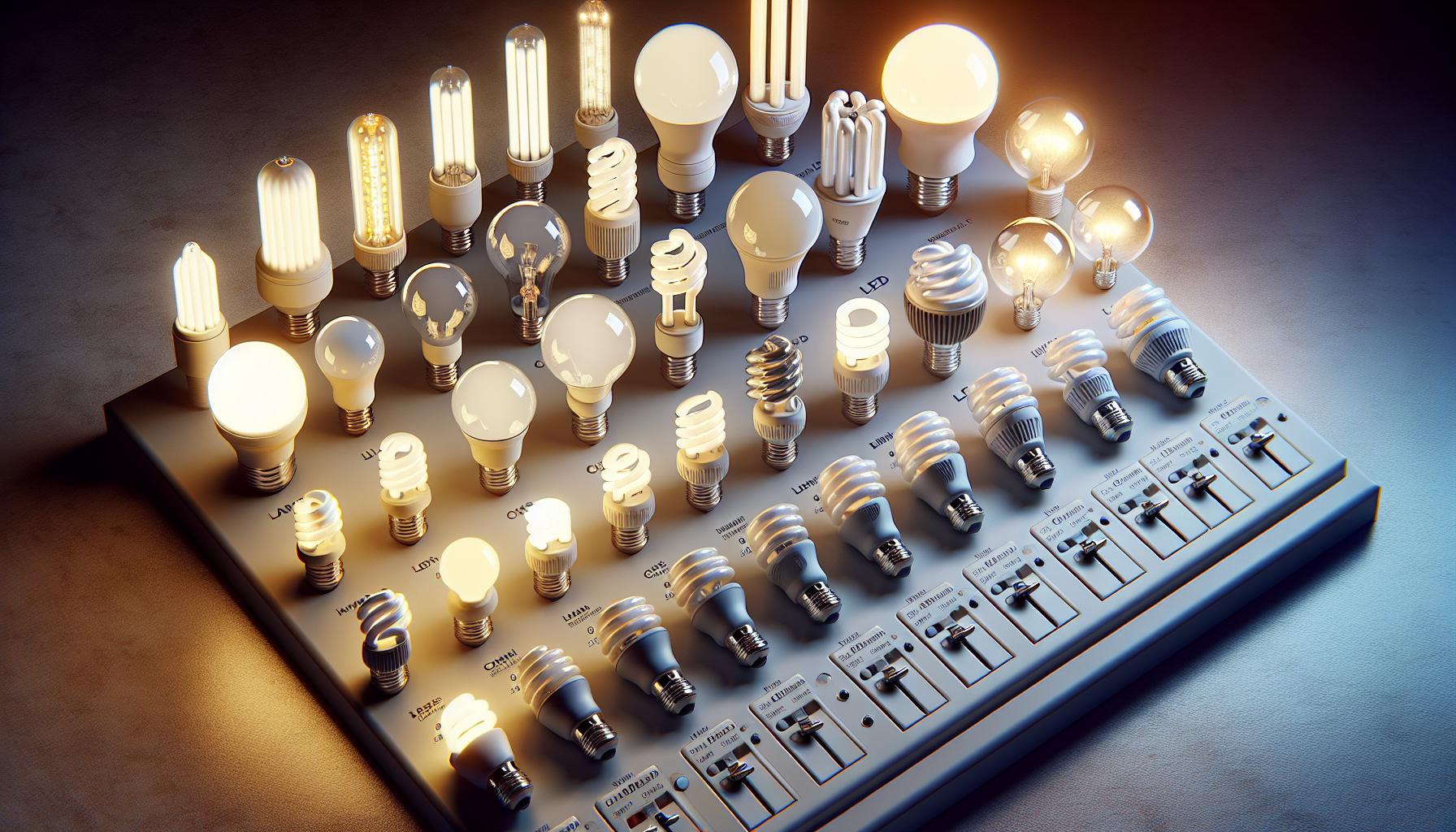
When you’re diving into the world of lighting, it’s not just about dimming; there are other crucial aspects that impact energy consumption and efficiency. Type of dimmer plays a significant role. Dimmers tailored for specific bulb types, such as those designed for LEDs, can optimize energy savings and prevent issues like flickering or shortened bulb life.
It’s also essential to understand the dimming range of your bulbs. Some bulbs can only dim to a certain percentage of their full brightness, which affects how much energy you’re actually saving. Make sure your bulbs have an adequate dimming range for your needs.
Here’s something you might not have considered: the age and quality of the bulb. Over time, bulbs can degrade, affecting performance and efficiency—even when dimmed. Higher quality bulbs tend to maintain their efficiency better over their lifespan.
In addition, consider the ambient temperature. Extreme temperatures can affect a bulb’s performance. Most bulbs are engineered to operate within specific temperature ranges for optimal energy use, so keep your environment in mind.
And let’s not forget about compatibility. Your dimmer and light bulbs need to play well together. Mismatched pairs can lead to poor performance and even higher energy consumption. Always check manufacturer guidelines to ensure they’re a good match.
Here’s a quick glance at what to check for optimal efficiency:
- Type of dimmer
- Dimming range
- Age and quality of the bulb
- Ambient temperature
- Compatibility with dimmers
Remember, lighting’s not just about setting the mood; it’s about leveraging technology for comfort, convenience, and conservation. Keep up with the latest innovations in dimmers and bulbs to ensure you’re lighting smartly. And as a DIY enthusiast, there’s nothing more satisfying than seeing your home lit just the way you like it—efficiently and effectively.
Conclusion
So you’ve seen how dimming your lights can lead to energy savings, but remember it’s not just about turning down the brightness. To truly benefit, you’ll want to make sure you’re using the right dimmers and bulbs that work well together. Keep an eye on the latest tech to keep your home lit cozily and efficiently. It’s all about the smart choices you make—happy dimming!
Frequently Asked Questions
Why is it important to use dimmers with the correct bulb types?
Dimmers must match the specific bulb types to optimize energy savings and prevent malfunctions like flickering or reduced bulb lifespan.
How does the dimming range of bulbs affect energy consumption?
The dimming range, or the degree to which a bulb can dim, impacts energy usage. Better range allows for lower light levels and more energy savings.
Can the age and quality of a bulb affect dimming performance?
Yes, older bulbs or those of lower quality may not dim as effectively, potentially leading to issues like flickering or early burnout.
Why is the compatibility between dimmer and light bulbs important?
Compatibility ensures that the lighting system works efficiently without any issues, like reduced bulb life or inadequate dimming.
How can staying updated with lighting innovations help in energy consumption?
Staying informed about the latest dimmers and bulb innovations can lead to smarter choices and more effective, energy-efficient lighting solutions.




